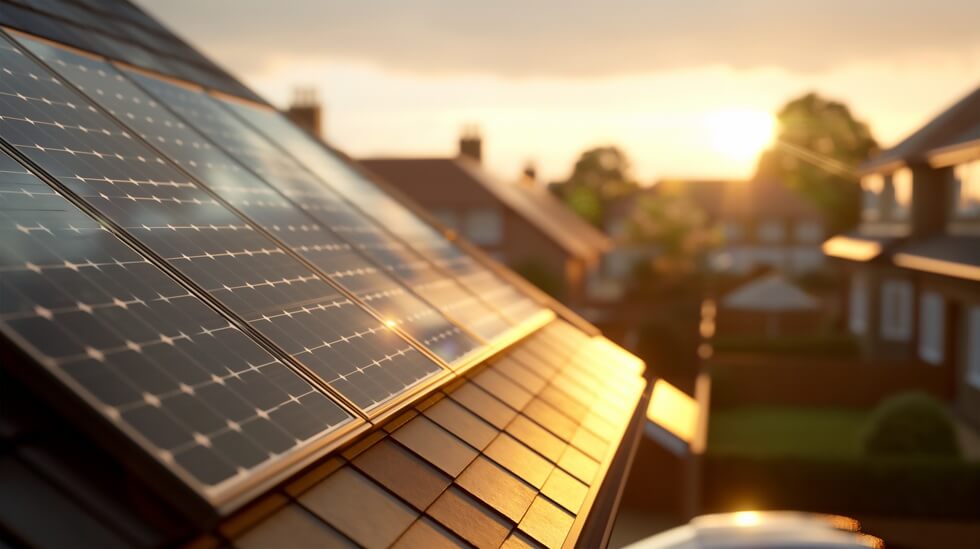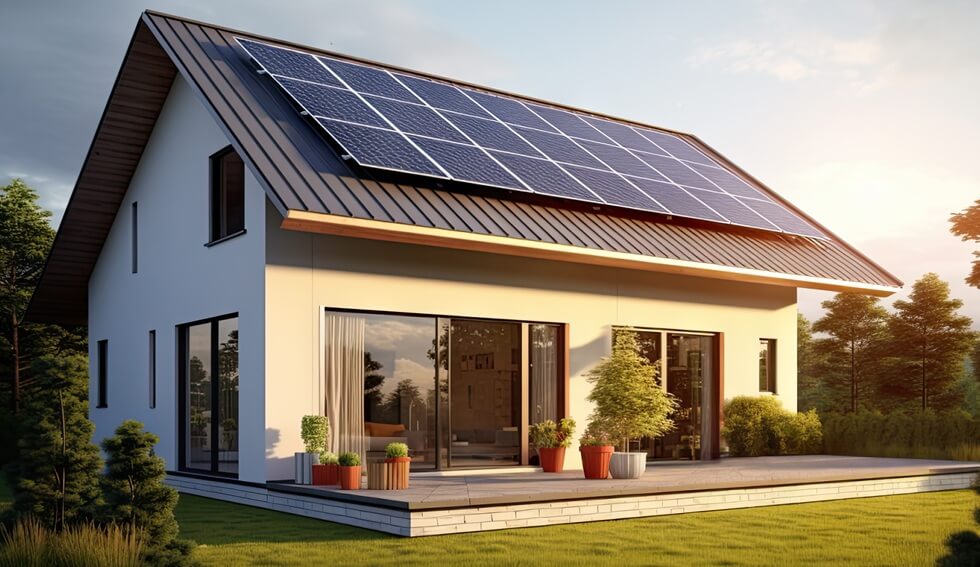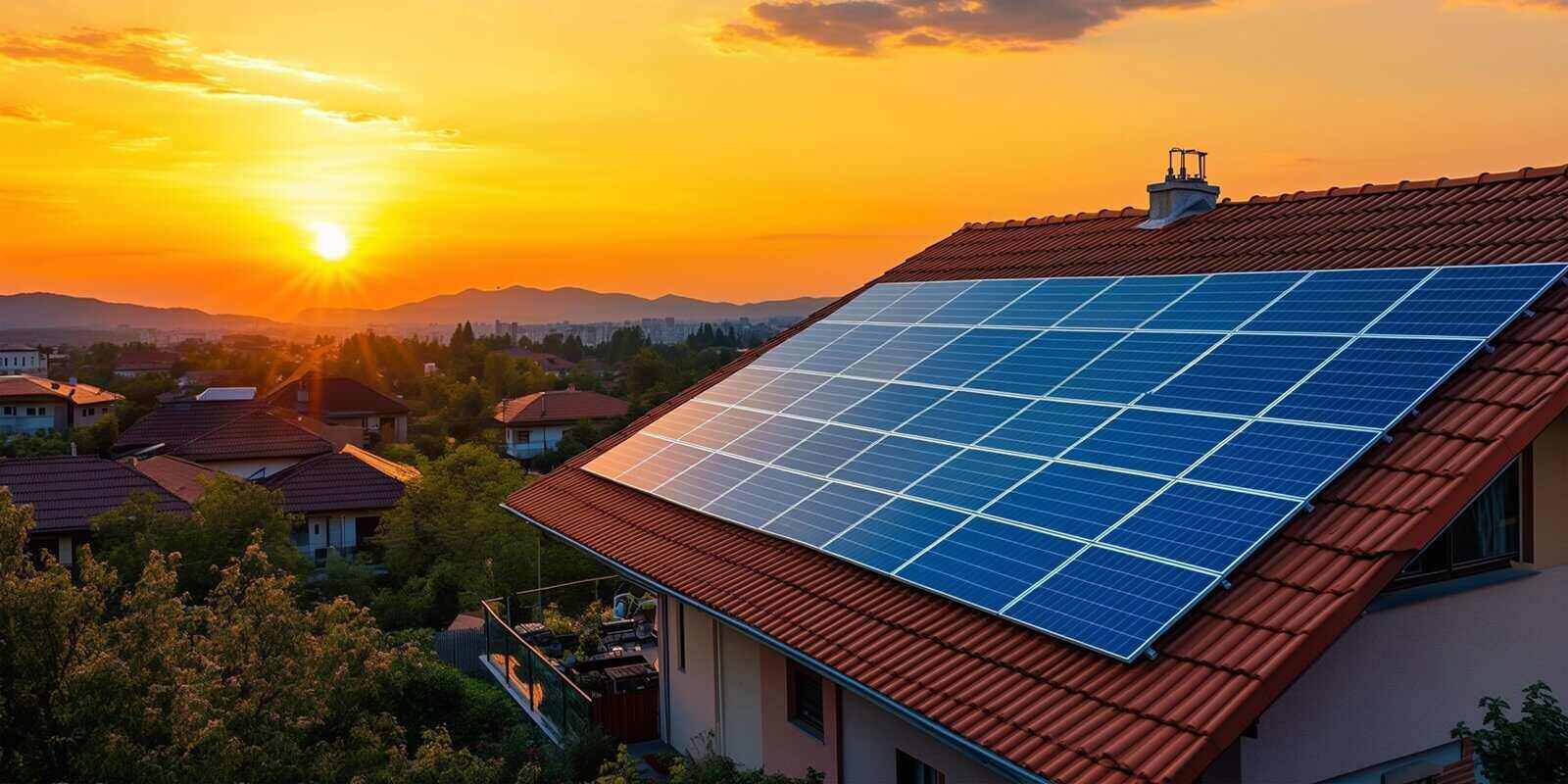A solar panel installation can reduce your home’s dependence on the grid, saving you money on utilities while positively impacting the environment. Today, solar installations create enough clean, renewable energy to power over 37 million homes. Increasing numbers of homeowners are switching to solar as residential installations have become more affordable, and the environmental benefits have become even more apparent.
Saving money on monthly utility bills is a significant benefit. Still, a more environmentally conscious home also provides homeowners peace of mind. Despite this, solar panel manufacturing is a carbon-intensive process with environmental downsides that homeowners should know about.
Below, we break down the environmental impact of solar panels in modern homes, including the effects of manufacturing and the benefits of switching to solar.

The Cost of Manufacturing Solar Panels
Solar panels provide homeowners with renewable energy sources without polluting the environment with greenhouse gases. As solar energy is more widely deployed, the impact of greenhouse gas reduction can be easily measured. However, solar panel production requires conventional energy expenditures.
The metals and glass needed to make solar panels come with their own carbon footprints, leading many researchers to conduct analyses of solar panel manufacturing processes to determine if they produce a net positive carbon impact.
Additionally, PV cells, which are necessary to create solar panels, require hazardous chemicals such as cadmium to manufacture. Solar batteries require lithium. Silicon manufacturing requires coal-burning processes that are often outsourced to China, where carbon emissions are among the highest in the world.
Leaks or unsafe transfers of these materials can lead to environmental harm and carbon emissions. Failing to dispose of or recycle PV panels properly can also increase the pollution footprint of solar panel production. Additionally, water is needed to cool the turbines and solar collectors used in manufacturing, which can lead to the overuse or pollution of valuable groundwater sources.
Because of these byproducts of solar panel production, many homeowners rightly wonder if their installation is a net positive for their local environment.
The Positive Impact of Solar Energy
Despite the risks of material pollution during manufacturing, solar panels still represent a net positive for homeowners invested in the environmental impact of their energy usage. The potential for manufacturing pollution is one reason solar panel production is returning to U.S. manufacturers, where plants are more safely regulated than overseas.
According to research published in Nature Communications, domestic solar panel production will reduce the emissions of solar panel manufacturing by around 30% by 2035. This is significant, considering solar panel deployment has already positively impacted carbon emissions. Consider this study from Columbia University, which found that solar panels reduced more carbon emissions per acre than trees.
Carbon emissions reduction is a universal benefit of properly installed solar panels. Still, the actual environmental impact of each array will differ depending on the situation. Sun-facing panels correctly angled to make the most use of direct sunlight will be more effective. However, homes in areas with less direct sun exposure may see differing results.
Homeowners should bear in mind that every kWh produced by their solar panel installation is one kWh that doesn’t have to be produced by a power plant. This not only relieves the pressure on utility suppliers, most of which outsource power to Maryland’s homes, but also reduces the negative impact of these plants on their local environments.
However, solar energy does more than reduce the home’s greenhouse gas emissions; it also mitigates the risks to air and water quality in conventional electricity production. As more homeowners adopt solar power, scientists continue to observe the positive impact on local ecosystems through multifactor environmental change.
Consider the animal impact of solar energy deployment. Solar energy can scale carbon dioxide removal from the atmosphere by encouraging photosynthesis and pollination, increasing soil fertility, and boosting the populations of dwindling pollinators, such as bees. Partnering with an experienced local energy provider to handle your solar panel installation is essential to ensuring the best use of your land.
When installed properly, solar panels positively impact the surrounding ecosystem and reduce the home’s carbon emissions. As more homes adopt solar power, scientists will continue to research its collateral benefits while finding ways to mitigate the environmental impact of production.

Reduce Carbon Emissions With Modern Solar Panel Installations for Your Home
Conscientious homeowners may have considered the environmental impact of solar panel production when planning their home energy renovations. While solar panel manufacturing requires harsh chemicals and carbon-emitting processes, the pros of solar energy far outweigh the cons. Solar energy remains the most environmentally conscious source of residential power.
At Energy Select, we provide professional local consultations to assess homes for solar panel installations. The environmental impact of our installations is one of our primary concerns, which is why we partner with homeowners to establish that their energy savings utilize innovative conservation and energy production methods.
Contact our team today to learn how we can take your home energy renovations from audit to installation, while maintaining the highest standards for environmental sustainability.


